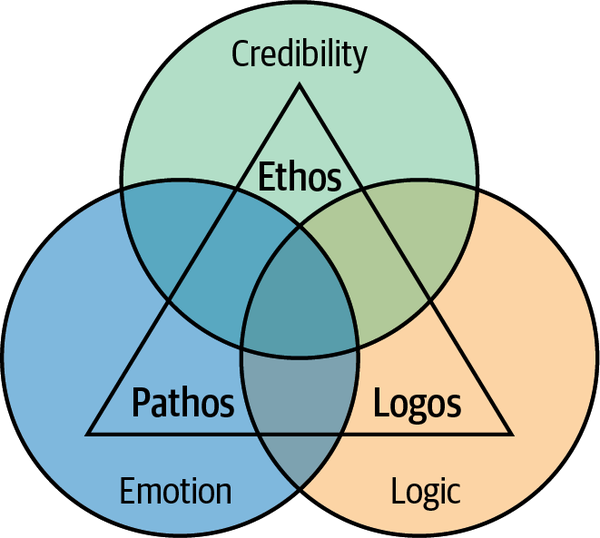Chapter 9. The Rhetoric Triangle
You may have heard of Aristotle’s rhetoric triangle or its constituent terms ethos, pathos, and logos. The rhetoric triangle was central to Aristotle’s teachings on the art of persuasion and was a fundamental tool for effective communication in ancient Greece. But how is it relevant to an architect or developer today?
At its core, the rhetoric triangle is a framework for understanding the three key elements of persuasive communication: ethos, logos, and pathos (see Figure 9-1). Ethos refers to the credibility and trustworthiness of the speaker, pathos to the emotional appeal used to engage the audience, and logos to the logical and rational argument presented. By mastering the balance and interplay between these three elements, you effectively engage your audience and achieve your desired outcome. Studying the rhetoric triangle was considered essential for ancient Greek students and remains a valuable tool nearly 2,500 years later for anyone looking to improve their ability to communicate persuasively.

Figure 9-1. Aristotle’s rhetoric triangle
Ethos
Ethos refers to the credibility, reliability, and trustworthiness of the speaker or author. In verbal and written communication, ethos can play a significant role in how the audience perceives the speaker or author and the message they are communicating.
Establish Your Credentials
One way to use ...
Get Communication Patterns now with the O’Reilly learning platform.
O’Reilly members experience books, live events, courses curated by job role, and more from O’Reilly and nearly 200 top publishers.

